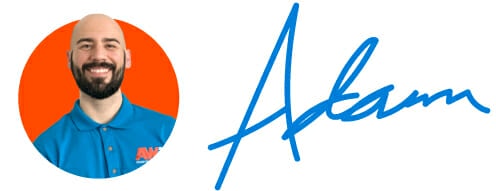Take a look at any poor design, and at least 9 times out of 10 you’ll notice one major flaw:
Inconsistency.
If you’ve followed Design to Dollars for a while, you know how much I preach for consistency in design.
It doesn’t matter if it’s a logo, a website, or a flyer — if your design elements are inconsistent, it’s an instant turn-off.
So what does having consistency in design actually mean?
Consistency in design follows a set of unwritten rules that you should establish your fonts, your color palette, and your aesthetic (or “style”) to utilize throughout your entire project.
If you don’t already have a brand style guide already in place, you need to:
- Create your color palette
- Choose 1-2 fonts at most
- Establish your style
Once you decide on these, you should first stop and go create your brand style guide for all future projects (give this a read on how to do that).
Then, you should begin designing — but begin designing with consistency in mind.
If you’re building a landing page, for example, you want to start by establishing your design foundation — your design rules, so to speak.
This is going to be a step further than just choosing your fonts and colors, but then how you apply those to your design.
So, for example, you’ll dictate that all body copy should be 16px, your H2 headings will be 48px, H3 headings will be 36px, etc.
By establishing this foundation before you even start designing, you take out all of the guesswork upfront — and you can just design.
So in approaching this landing page, you’d want to:
- Make ALL of the buttons the same color, size and font.
- Make ALL of your headings the same color, size and font.
- Style your images ALL the same (rounded corners, shadows, etc.).
I think you understand by now, it’s just about consistency — doing the same thing across all the same elements.
It’s when you start to mix and match these things when your design goes array.
There’s a reason we put the same 4 wheel designs on all four tires of our vehicles — and the window trim is all black for every window. A different wheel and mismatched window trim would just look awful!
Having consistency brings predictability, and predictability helps you design with ease — allowing you to be more creative, and think less.
See you next time,
